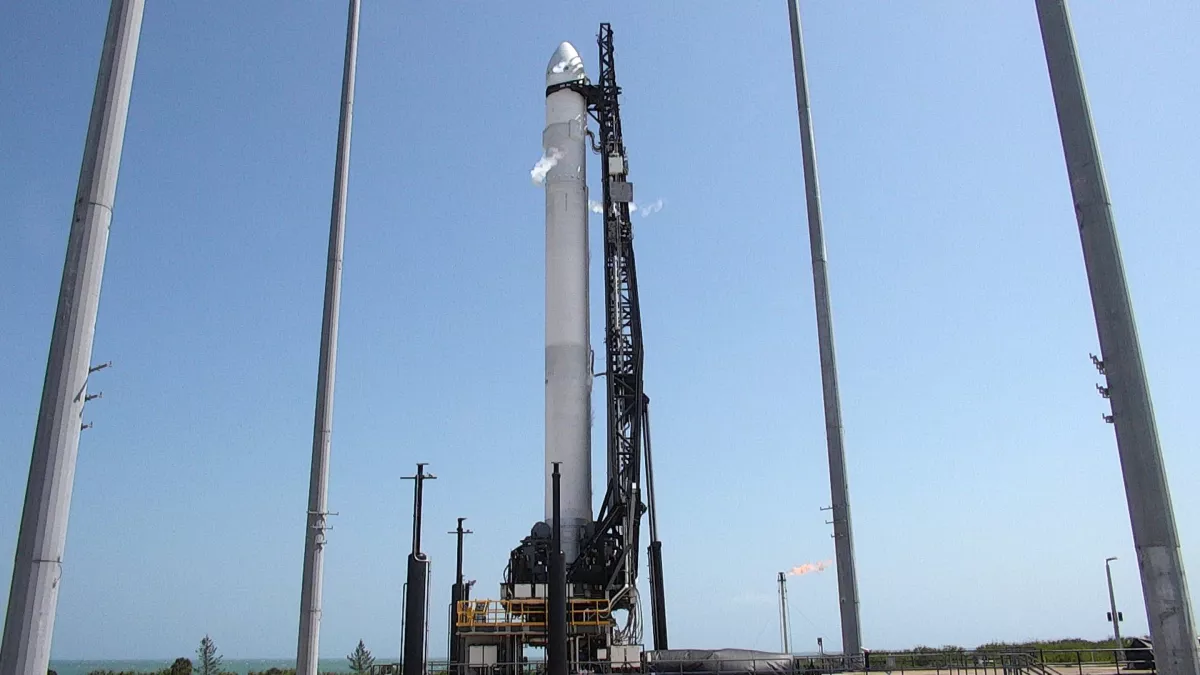The space startup Relativity Space called off the first-ever flight of its new 3D-printed rocket on Wednesday (March 8) after a last-minute abort and temperature issues during the countdown.
Relativity Space’s Terran 1 launch vehicle, billed as the world’s first 3D-printed rocket, experienced an automatic abort about 70 seconds before an initial launch try at 2:40 p.m. EST (1940 GMT) at its Florida launch pad at the Cape Canaveral Space Force Station.
While the company tried to reset for a second launch attempt on Wednesday, it ultimately had to stand down “due to exceeding launch commit criteria limits” for the fuel temperatures on the rocket’s second stage, officials wrote in a Twitter update(opens in new tab).
“We are scrubbing launch operations for the day, thanks for playing,” the company’s launch director said during the countdown.
“While we obviously had high hopes for sending our Terran 1 off today, we’re going to continue to take a measured approach so we can ultimately see this rocket off to Max Q and beyond,” Arwa Tizani Kelly, test and launch technical program manager for Relativity Space, said during live launch commentary. (Max Q refers to the period of maximum dynamic pressure on a rocket during launch.)
The company has not yet set a new launch date and will announce it on Twitter once it is available, representatives said.
“We will work toward our next launch window in the coming days. Due to methane/liquid natural gas propellant conditioning, it will take a few days until our next attempt,” Relativity Space CEO Tim Ellis wrote on Twitter(opens in new tab) after the scrub. “Onward, and proud of the team today for a professional and smooth first operation!”
Relativity Space’s first Terran 1 mission, called “Good Luck, Have Fun” or GLHF for short, is a shakedown mission for a 110-foot-tall (33-meter) rocket designed to launch small satellites into low-Earth orbit. The two-stage rocket is novel in that 85% of its structure by mass is 3D-printed, including its nine first-stage Aeon-1 engines, which are fueled by liquid methane in another U.S. orbital first.
Terran 1 is designed to carry payloads of up to 2,700 pounds (1,250 kilograms) to low Earth orbit and can haul 1,980 pounds (900 kg) to a sun-synchronous orbit at a cost of about $12 million per flight, Relativity Space has said. The company is also working on a larger, fully reusable rocket called Terran R designed to stand 216 feet tall (66 m) and launch more than 44,000 pounds (20,000 kg) to orbit with its Aeon-R engines starting in 2024.
“No matter the outcome tomorrow, we are still in the early innings of a 9-inning ballgame,” Relativity Space CEO Tim Ellis wrote on Twitter(opens in new tab) before the Terran 1 launch attempt. “This launch won’t singularly define our long-term success.”
Ellis said he will be happy to see if Terran 1 can successfully pass through Max Q, since it will prove that the company’s use of additive manufacturing technology to 3D-print rockets is viable.
“This launch will, however, provide us with useful data and insights that will make us better prepared for our next at-bat, and is a fantastic learning platform for developing technologies directly applicable to Terran R, giving us a lot of confidence we are ahead in the race to become the next great launch company,” Ellis added. “Excited to show the world what we’ve got!”

